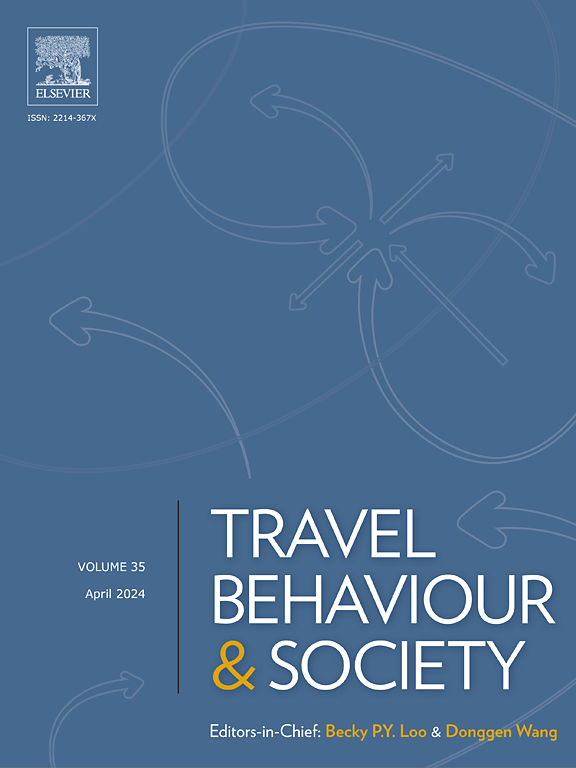城市快速路立交编织区交通安全风险评价及变道行为表征
IF 5.7
2区 工程技术
Q1 TRANSPORTATION
引用次数: 0
摘要
城市高速公路立交编织区是一种特殊的编织断面类型,具有复杂的安全环境。本研究的目的是评估UEI编织区域的交通安全风险,并分析其变道行为特征。交通安全风险分为瞬时风险和整体风险。构建了追尾和侧擦冲突的风险特征指标,并采用k均值法对瞬时风险进行评估。为了评估整体风险,采用故障树分析法计算考虑瞬时风险沿变道过程分布的综合风险指数。将现场采集的UEI编织区域变道轨迹数据应用于提出的风险评估方法,并进行特征分析。结果表明:从冲突类型来看,侧擦冲突发生频率更高,变道车辆与前方车辆(包括当前车道和目标车道)发生冲突的可能性更大;变道距离短或至少穿过两条车道的变道行为是导致整体安全风险高的主要因素之一。总的来说,UEI织造区的安全状况有待改善。该方法可用于辅助驾驶的变道决策,特征分析结果可用于UEI编织区组织方案的优化。本文章由计算机程序翻译,如有差异,请以英文原文为准。
Traffic safety risk assessment and characterization of lane-changing behavior in urban expressway interchange weaving area
The urban expressway interchange (UEI) weaving area is a special weaving section type and has a complex safety environment. The purpose of this study is to assess the traffic safety risk and analysis characteristics of lane-changing behavior in the UEI weaving area. Traffic safety risk is divided into instantaneous risk and overall risk. Risk characteristic indexes of rear-end and sideswipe conflicts are constructed and the K-means method is applied to assess the instantaneous risk. To assess the overall risk, the integrated risk index considering the distribution of instantaneous risk along the lane-changing process is calculated by faulty tree analysis. Then the field collected lane-changing trajectory data in the UEI weaving area is applied to the proposed risk assessment method and characteristics analysis is conducted. The results show that sideswipe conflict occurs more frequently in terms of conflict types, and lane-changing vehicles are more likely to have conflicts with the vehicles ahead, including those in the current lane and the target lane. Lane-changing behaviors with short lane-changing distance or crossing at least two lanes are among the main contributing factors for high overall safety risk. In general, the safety situation of the UEI weaving area needs to be improved. The proposed method may be applied to lane-changing decision making in assisted driving, and characteristics analysis results could be used to optimize the organization scheme in the UEI weaving area.
求助全文
通过发布文献求助,成功后即可免费获取论文全文。
去求助
来源期刊

Travel Behaviour and Society
TRANSPORTATION-
CiteScore
9.80
自引率
7.70%
发文量
109
期刊介绍:
Travel Behaviour and Society is an interdisciplinary journal publishing high-quality original papers which report leading edge research in theories, methodologies and applications concerning transportation issues and challenges which involve the social and spatial dimensions. In particular, it provides a discussion forum for major research in travel behaviour, transportation infrastructure, transportation and environmental issues, mobility and social sustainability, transportation geographic information systems (TGIS), transportation and quality of life, transportation data collection and analysis, etc.
 求助内容:
求助内容: 应助结果提醒方式:
应助结果提醒方式:


